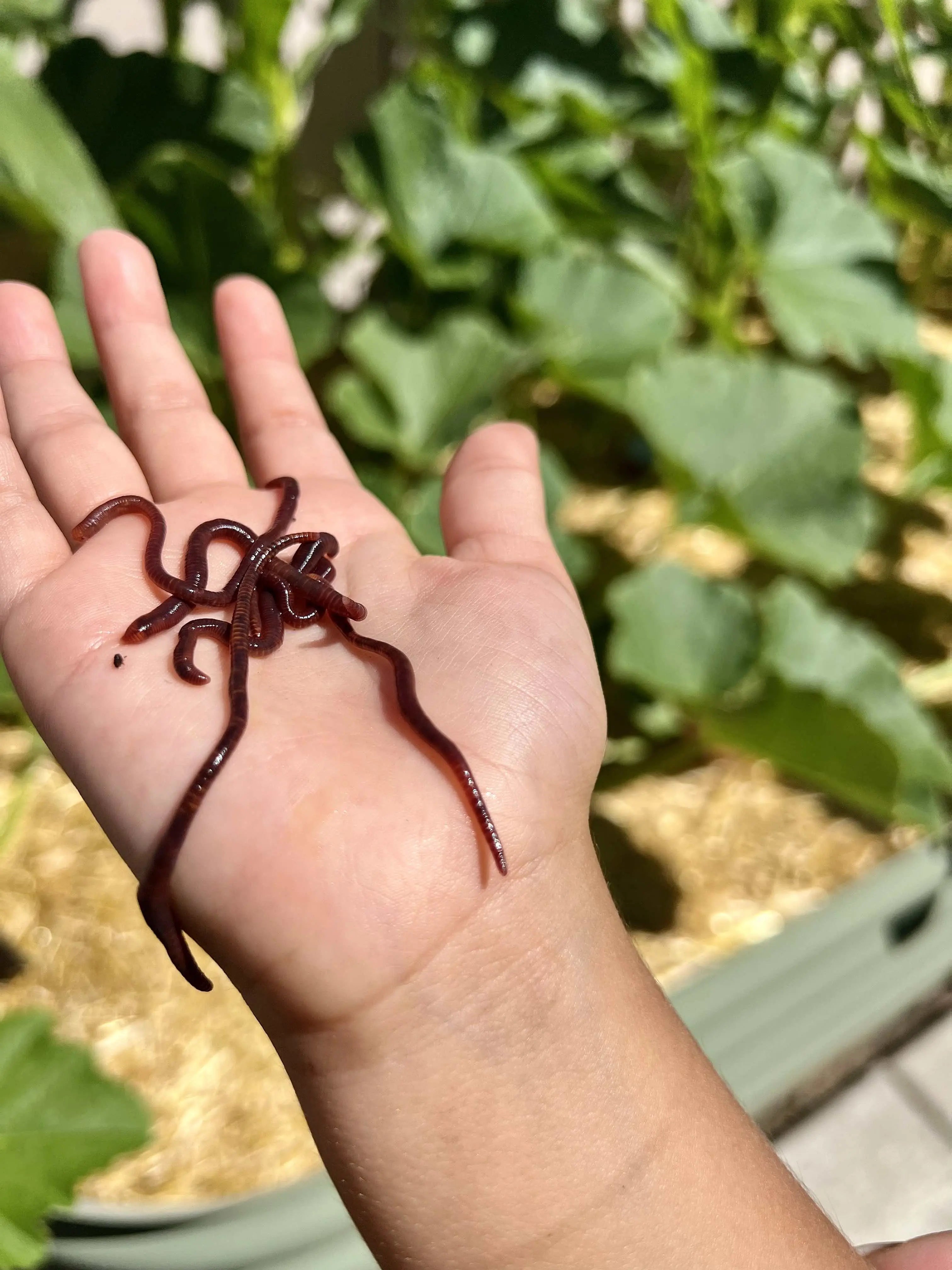Red Wigglers: The Unsung Heroes of Organic Waste Recycling
Red wigglers, or Eisenia fetida, act as vital representatives in the organic waste recycling process, changing disposed of products into important vermicompost. Their efficient break down of natural matter not just enhances dirt high quality yet additionally adds to lasting waste monitoring practices. As the world significantly seeks options to combat waste build-up and improve agricultural performance, understanding the function of these worms ends up being necessary. What mechanisms enable them to thrive in compost environments, and just how can they be efficiently used in both residential and business settings? Exploring these concerns exposes the more comprehensive implications of vermicomposting in our environmental landscape.
What Are Red Wigglers?
The amazing durability of red wigglers, clinically called Eisenia fetida, underscores their vital function in natural waste recycling. These small, reddish-brown earthworms are generally located in disintegrating natural issue, such as compost heap and manure stacks. Lake Hickory Bait. Unlike other earthworm types, red wigglers thrive in nutrient-rich atmospheres and are extremely effective at breaking down natural materials, making them necessary for vermicomposting

(Red Wiggler Express)Along with their role in waste reduction, red wigglers add to dirt wellness by boosting dirt framework and aeration with their tunneling activities (Lake Hickory Bait). Their presence in composting systems not just enhances decay prices but also promotes a lasting approach to throw away administration, showing their value in eco-friendly preservation initiatives
Benefits of Composting With Worms
Composting with worms, specifically red wigglers, provides countless advantages that improve both waste management and dirt wellness. These worms effectively break down organic waste, transforming it into nutrient-rich vermicompost that enriches dirt. This procedure accelerates decay, enabling a quicker recycling of kitchen area scraps and other natural products contrasted to conventional composting methods.
In addition, the vermicompost created by red wigglers is brimming with helpful microorganisms, which assist enhance soil structure, aeration, and wetness retention. This improves the overall wellness of plants, promoting vigorous growth and raised returns in gardens and agricultural setups. Moreover, the usage of worms in composting lessens the production of greenhouse gases, such as methane, adding to an extra sustainable waste management system.

Just How to Beginning Vermicomposting
Developing a vermicomposting system is an uncomplicated procedure that can produce considerable advantages for both waste administration and dirt enrichment. To start, select a suitable container, such as a plastic bin or wood box, with sufficient air flow holes to guarantee correct air flow. The dimensions need to preferably be around 2 feet by 3 feet, enabling adequate area for the worms to prosper.
Next, prepare bedding product, which can contain shredded paper, cardboard, or coconut coir. This bed linen should be dampened to produce an ideal habitat for the worms. When the bed linens remains in area, introduce red wigglers (Eisenia fetida) into the container, usually around one extra pound of worms for every square foot of surface.
Adhering to the positioning of worms, add natural waste, such as fruit and veggie scraps, coffee premises, and smashed eggshells. With these actions, you will effectively initiate a vermicomposting system that adds to lasting waste monitoring and enhances your soil.
Preserving a Healthy And Balanced Worm Container
(Red Wiggler Express)Keeping a worm container prospering needs routine interest and care to make Red Wiggler Express certain the health and wellness of the red wigglers and the effectiveness of the composting procedure. Correct upkeep starts with keeping track of the dampness degrees; the container ought to perspire however not saturated. A great regulation of thumb is to keep an uniformity comparable to a wrung-out sponge.
Oygenation is critical. Carefully blending the bedding and food scraps every few weeks protects against compaction and makes sure that all worms have access to oxygen. Additionally, it is essential to feed the worms suitably. A balanced diet of vegetables and fruit scraps, coffee premises, and smashed eggshells need to be offered in moderation to avoid overfeeding, which can result in odors and pests.
Temperature level regulation is another crucial element. Red wigglers thrive in a variety of 55 to 77 levels Fahrenheit. If the container comes to be as well hot or cool, the worms might end up being stressed out - Lake Hickory Bait. Finally, periodically look for indications of wellness, such as worm population growth and the presence of healthy and balanced castings. By vigilantly handling these elements, one can maintain a durable and productive worm bin.
Effect On Lasting Living
The successful upkeep of a worm bin not only benefits the wellness of red wigglers but also adds substantially to lasting living methods. By reusing natural waste, such as kitchen area scraps and yard debris, red wigglers help divert significant amounts of material from land fills. This decrease in waste not just lowers greenhouse gas discharges but likewise minimizes the ecological worry connected with waste management.
Moreover, the spreadings generated by red wigglers serve as a nutrient-rich natural plant food, improving soil wellness and advertising plant growth. This all-natural option to chemical fertilizers sustains sustainable farming and gardening methods, lowering reliance on synthetic inputs that can hurt ecological communities. Additionally, worm composting promotes awareness of waste administration, urging individuals and neighborhoods to take on even more sustainable routines.

Verdict
In summary, red wigglers offer as crucial contributors to organic waste reusing with their effective disintegration of natural materials. By incorporating vermicomposting into waste administration strategies, people and neighborhoods can considerably reduce waste while advertising environmental sustainability.